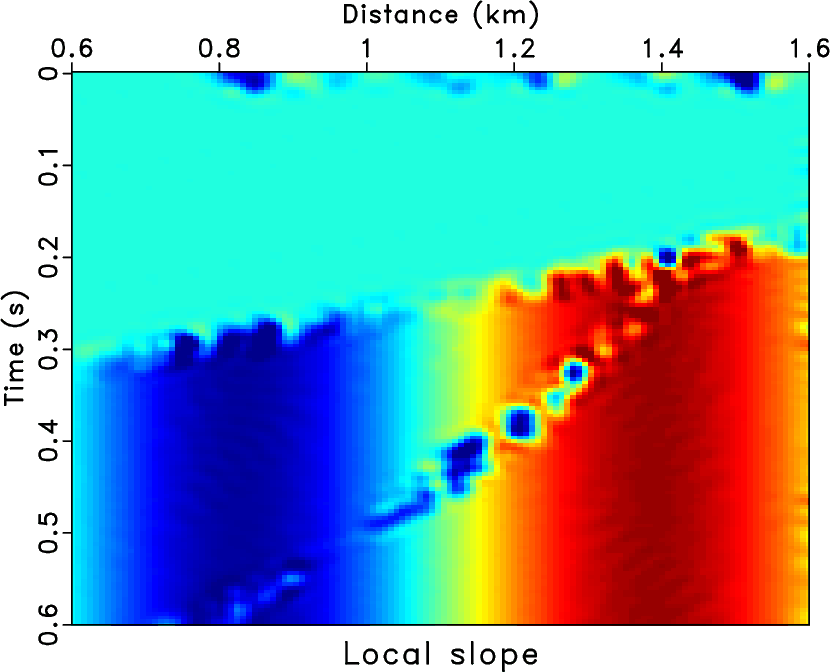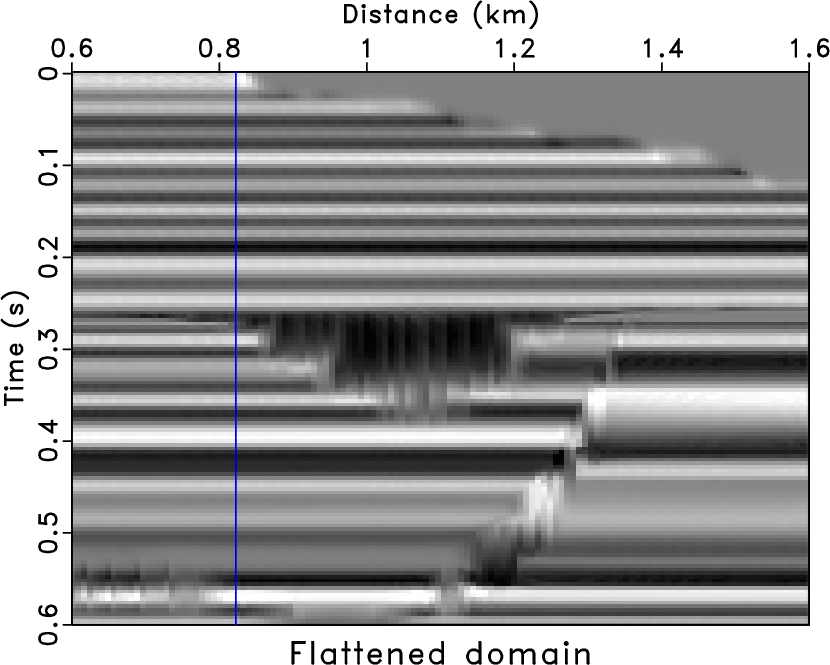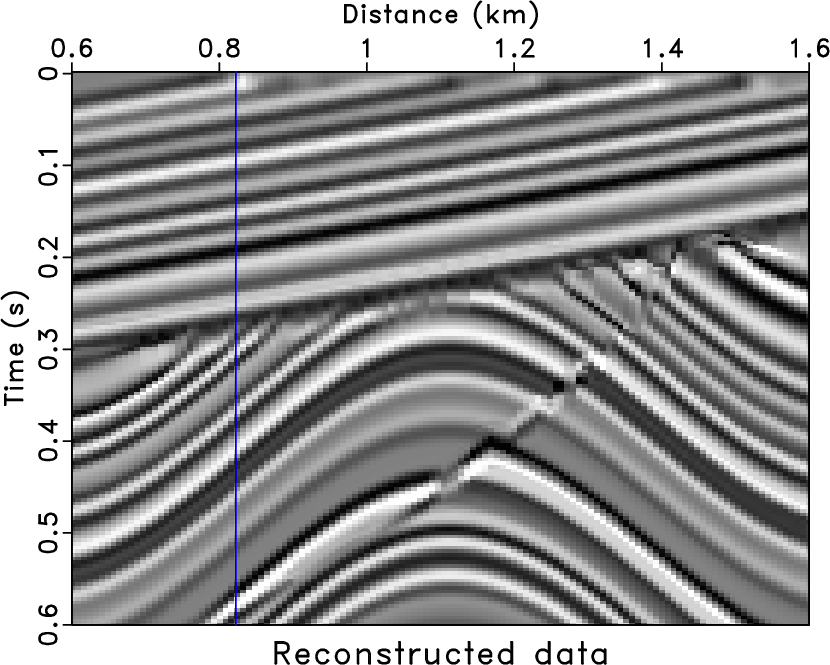|
|
|
|
Enhancing seismic reflections using empirical mode decomposition in the flattened domain |
Next: Field data examples Up: Method Previous: Smoothing by empirical mode
The local slope can be obtained by solving the following equation:
Figure 1 shows a simple demonstration of the plane-wave flattening process. Figure 1a shows a synthetic data, with dipping reflector, curved events, and faults in the profile. Figure 1b shows the corresponding local slope estimation using the PWD algorithm. Figure 1c shows the flattened domain of the synthetic data using the plane-wave flattening algorithm. The reference trace is selected as the 30th trace in the section, as highlighted by the blue line in Figures 1a, 1c and 1d. Figure 1d shows the reconstructed synthetic data using the inverse plane-wave flattening process.




|
|---|
|
sigmoid,sdip,sflat,flat-rec
Figure 1. Demonstration of the plane-wave flattening algorithm.(a) Synthetic example. (b) Local slope estimation. (c) Flattened domain. (d) Reconstructed data. |
|
|